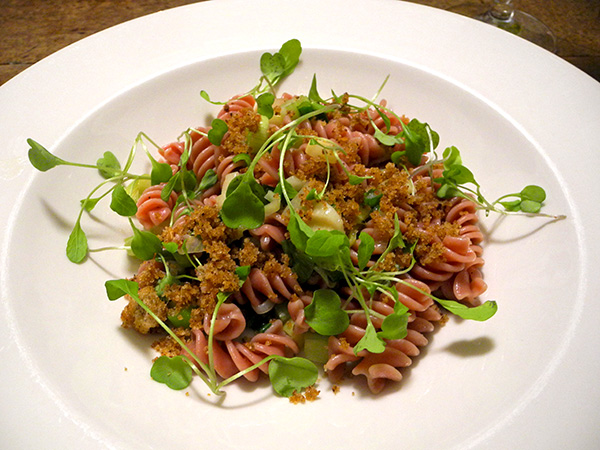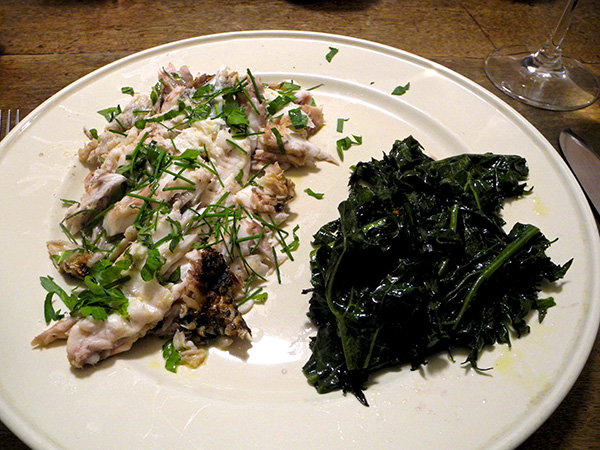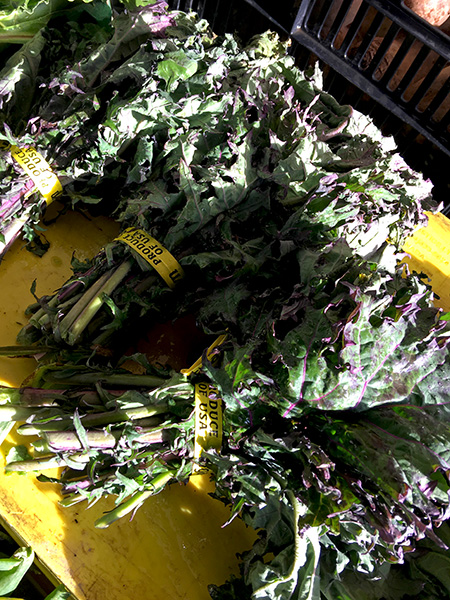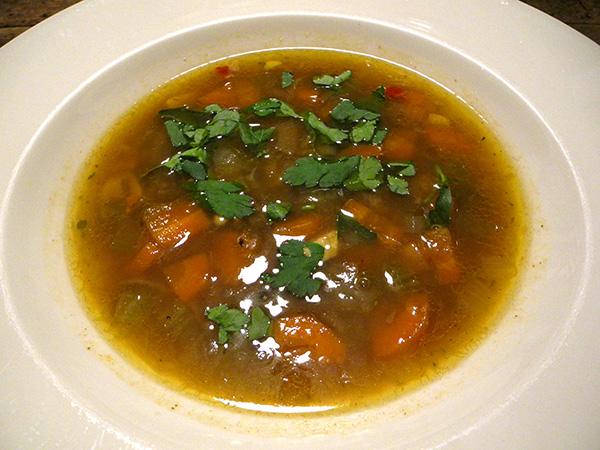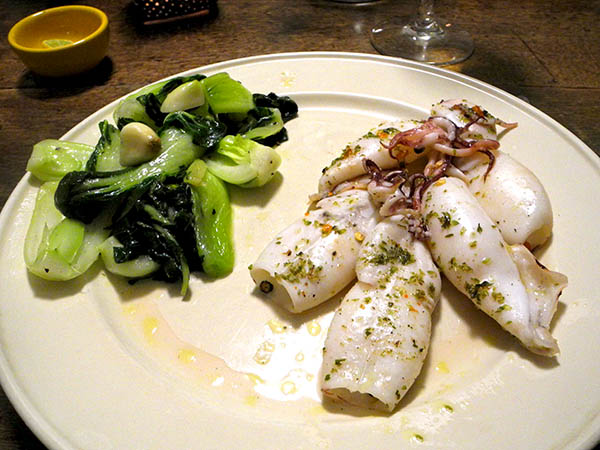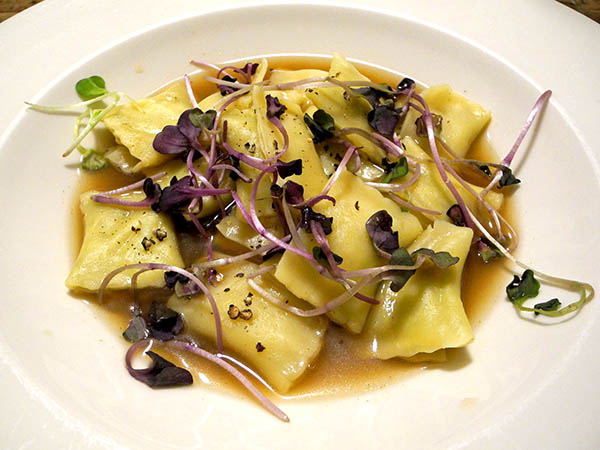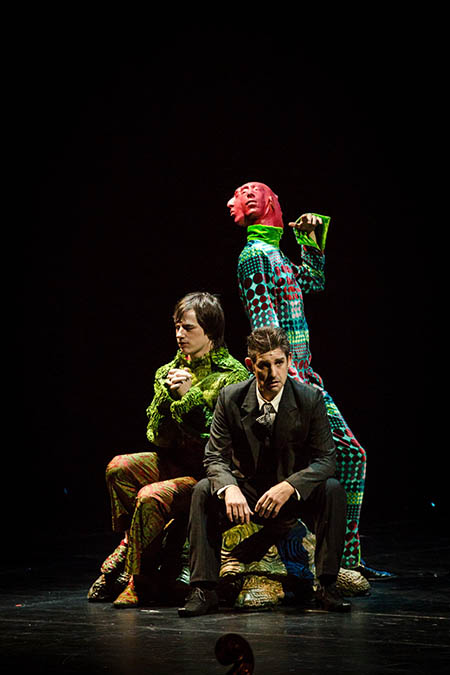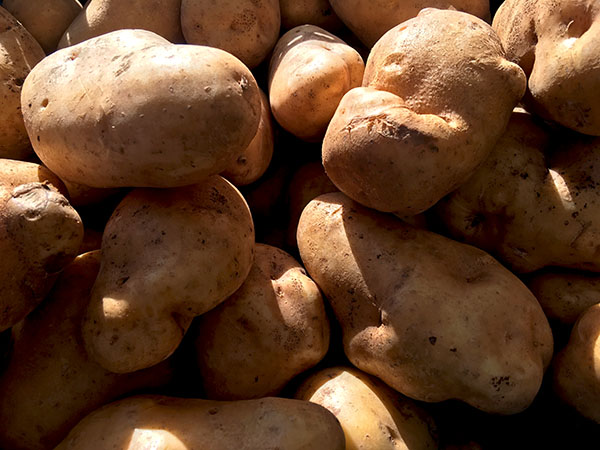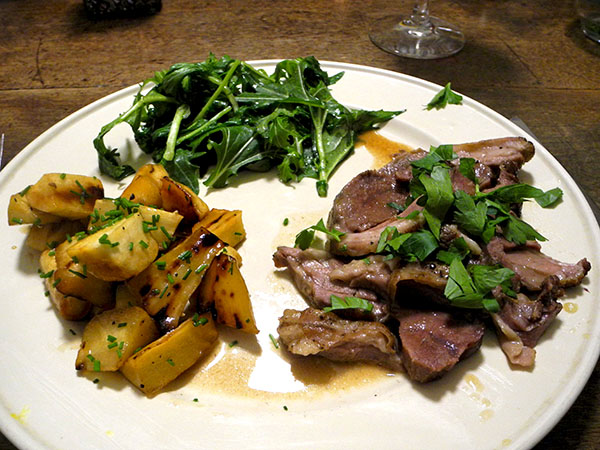
It was a Sunday dinner, but only remotely related to the kind Mom served in our midwestern dining room in the middle of the last century.
I’ve liked preparing and have enjoyed eating goat in the past, although it hadn’t shown up on our table in a year. Then, a couple weeks ago, on a visit to the Union Square Greenmarket I saw that Consider Bardwell Farm was advertising meat. I’ve bought veal and goat from them before, and the quality of both the meat and the butchery has been excellent. They’re really focused on the production of some very fine cheese, so the goat [chevon] and the veal is something of a special event (I once heard a farmer who only made ewe’s cheese tell a puzzled customer, explaining the appearance of goat meat at her stall, “have to do something with all the boys”).
I asked Paul, of Consider Bardwell, about goat chops, maybe a partial rack, or perhaps some ribs, but he was out of all those cuts by that time of the afternoon, so I picked up with a small roast, a boneless shoulder, to be precise; it weighed but one pound. I had never cooked a goat shoulder, but I knew it would require a long, slow braise to tenderize the meat. I hit the files, came up with this recipe, and it was more or less the process I used.
It was an interesting operation, and the chevon tasted very good, but neither of us thinks the time and the effort it required would be worth repeating.
Unfortunately (or not) there was too much liquid remaining in the pot to be quickly reduced for a sauce, so I improvised and produced something more like an au jus, enriched with a little rich Kerrygold Pure Irish Butter. It was actually very good (see the mention of veal tongue stock below, in the list of ingredients).
The next time I’ll hold out for those chops, maybe a partial rack, or perhaps some ribs, and yet I know I’d still be a sucker for something different.

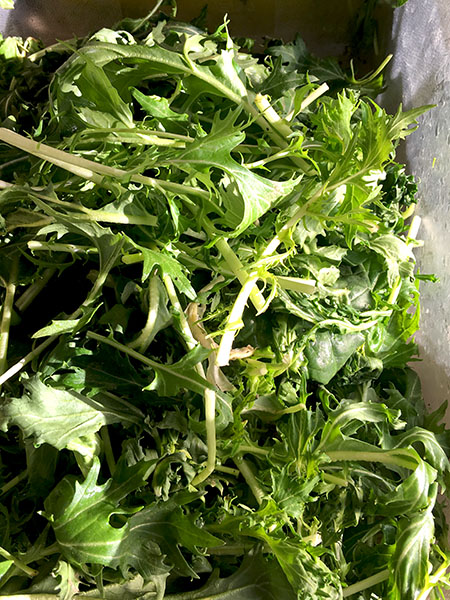
- the ingredients for the tiny braise included a one-pound boneless rolled goat shoulder from Consider Bardwell Farm, which I daintily bound in butcher’s twine (I should have taken a picture of the neat pattern); Pimentón de la Vera dulce, in which the roast was rubbed, along with salt and pepper, and left for an hour before the cooking began); garlic and onion from Lucky Dog Organic Farm; celery from Foragers; carrot from Norwich Meadows Farm; chicken broth made with Better Than Bullion chicken base; and, instead of veal stock, veal tongue stock remaining after this March meal and frozen at the time; and parsley from Eataly
- about a pound of parsnips from Tamarack Hollow Farm, cooked along the lines of this recipe, using local Linden blossom honey from Tremblay Apiaries; Aceto Cesare Bianco white wine vinegar from Buon Italia; and chives from Two Guys from Woodbridge
- mizuna from Norwich Meadows Farm, wilted in a little olive oil, seasoned with Maldon salt and freshly-ground Tellicherry pepper
- the wine was a California (Lodi) red, Karen Birmingham Zinfandel Lodi 2014, from Naked wines
- the music was Paul Dessau’s 1974 opera, ‘Einstein’, a 1976 recording from its premier production in East Berlin, Otmar Suitner conducting the Berlin State Opera Chorus, Berlin Staatskapelle members; it’s a very interesting artifact, with some “bleakly expressive” [Gramophone] music; the text and the music are discussed in these three contrasting reviews: Complete Review, Gramophone, and Suppressed Music

Paul Dessau, Los Angeles 1948, photographed by Curt Bois
[image of Dessau from kuenste-im-exil.de]
